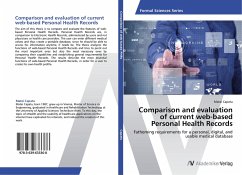In recent time a new trend can be recognized on the Internet in general and especially in learning environments by moving away from monolithic one-provider-fits-all to a combinatorial mixing pieces-together approach. Mashing-up stands for the re-use, re-combination, and re-organisation of small software artifacts of clearly defined functionality (so-called widgets). Subsequently, mashed-up learning systems describe the idea of highly customizable environments shifting substantial personalization possibilities from administrators to the end-users (learners). This shift has significant impacts on efficient data communication strategies of learning management systems. This book presents a technical solution for an inter-widget communication in mash-up personal learning environments, enabling the possibility of different data send and receive strategies, such as, cross-domain push/pull mechanisms or user-centered notification settings and, thus, enabling to model learner workflows indistributed environments. It explains the technical background of the widget concept and why inter-widget communication is beneficial, especially in the area of e-learning. The outcome of this book are new methods and corresponding open-source prototype software artifacts. A proof-of-concept pedagogical use-case of a lifelong learner validates the approach.








